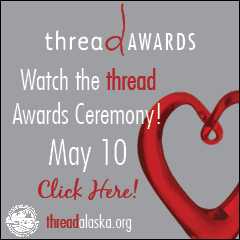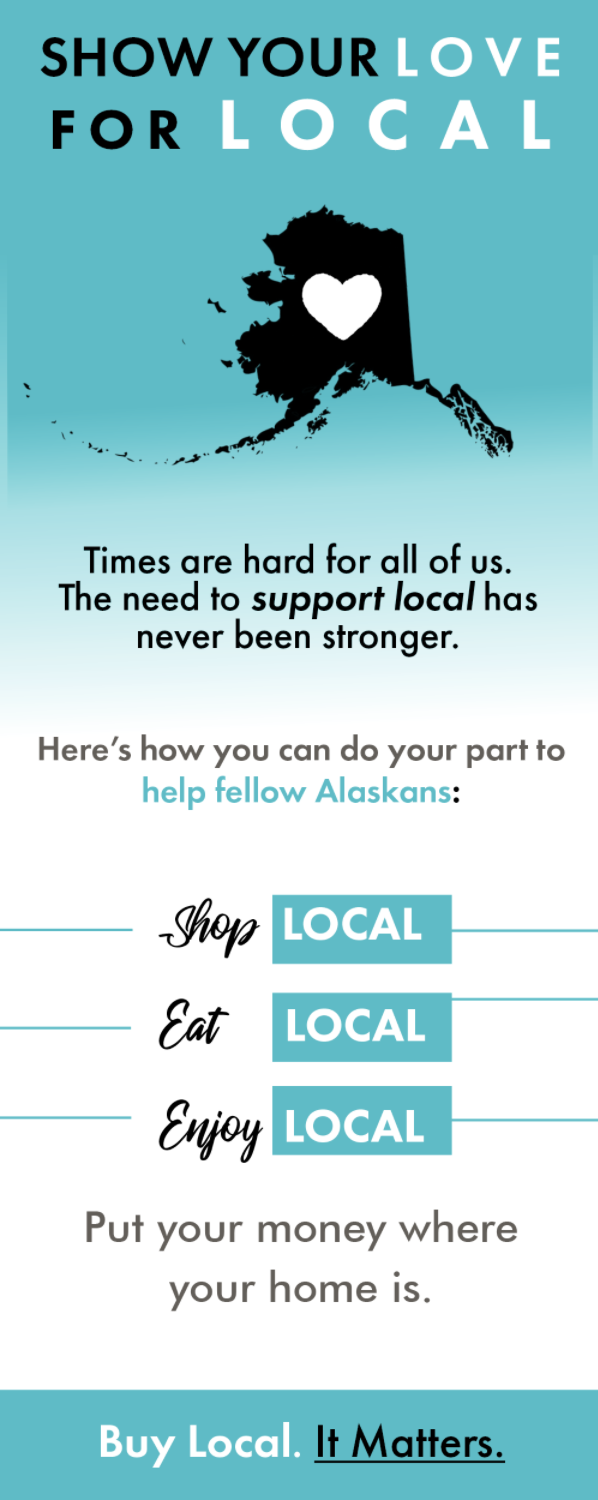Kids Making a Difference
From ages 4 to 18, these young Alaskans are bringing positive changes to their communities
By Julia Moore
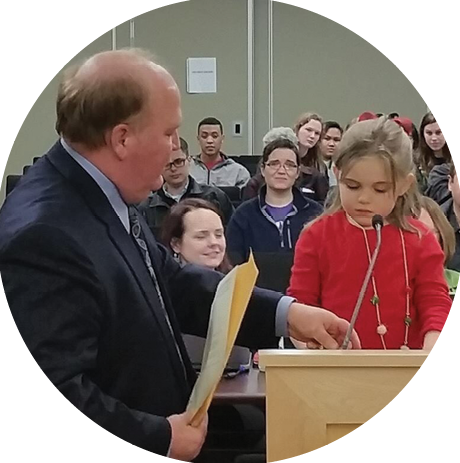
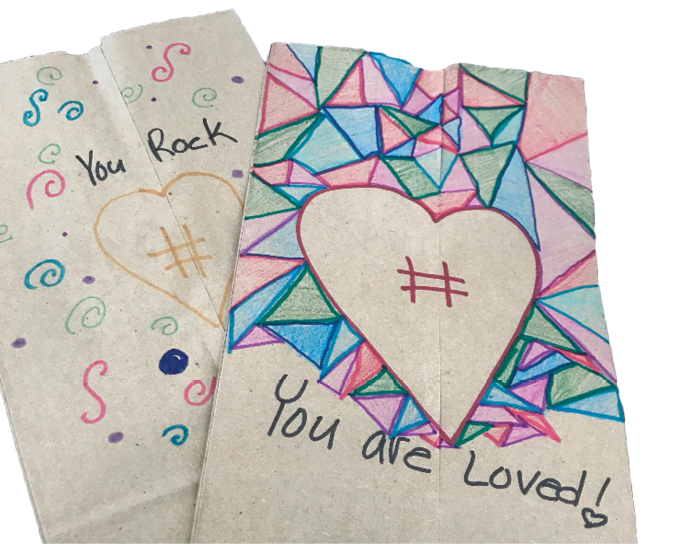
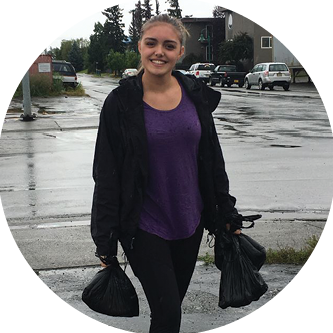
At left: Addie speaking at a local borough assembly meeting about the need for park renovations.
At right: Aunika delivers #HashtagLunchbag meals in the rain.
As adults, when we look at our world, it’s easy to feel a bit powerless – like we can’t fix major problems. But why let that stop the kids?
“Kids will bring (adults) ideas and we say ‘you can’t really do anything about that,’ or ‘that’s too big,’ or ‘that’s out of your hands,’ ” notes Amanda Block, chief mission officer with the Girl Scouts of Alaska. But that’s really not the case at all, she adds. Kids all across Alaska are becoming catalysts for change, daring to dream.
Knowing that there are people on the streets going hungry and losing hope, 16-year-old Aunika Alch was inspired to take action. She founded the Anchorage chapter of #HashtagLunchbag, which gives meals to homeless, each in a colorful lunch bag with a meaningful handwritten note. “I did lots of research. I talked with police officers; I went to shelters. I took a month and a half to go through every stage I could to get as much research as possible,” says Aunika. Now, Aunika makes weekly grocery trips and coordinates 50-70 volunteers, all while in high school. What makes running #HashtagLunchbag worth all of the effort? For Aunika, the reward is the reaction of those she helps. “Seeing someone smile,” she says enthusiastically. “Just seeing their eyes light up with hope that someone’s actually caring to take a minute out of their day to actually learn about this person, their stories and what they’ve been through.”
In Ketchikan, the playground equipment in a local park was aging to disrepair. “It was not safe, and it was not fun,” says 7-year-old Addie Elps, a park-goer who, at the age of 4, saw the need for renovations. “It had a slide that gave me splinters and a rocking ducky and swing set that was rusty.” At home, Addie’s parents began videotaping her rants about the playground, putting them online and typing them up. When Addie realized what they were doing, she began asking to write letters, and they would transcribe her voice for the public. “The newspaper published my letters. I wrote a letter to the president and Michelle Obama sent me stickers,” says Addie. But, more important to her, “these projects have helped my community… I like watching other kids play on the playground. I like making the world a better place.”
These girls’ projects are outstanding and really impact their community, but kids can make a difference with any project – large or small. Amanda says that one of the Girl Scouts’ projects for camp is telling the girls to do something to make something better and tell the group about it the next day. “We’ve had girls come back and say they picked up all the moose poop on their street because it was making things dirty, and that was to help the earth, and that’s fantastic.”
If your kids want to give back to the community, Addie says “find something that is broken and fix it. Or find something that you love and make it better.” Even if your kids aren’t looking to be catalysts for change, push them to find solutions for problems they see in the community. For example, if the beach is covered in trash, have them get together with friends to form a group and clean it. If it’s hot out, and there’s an outdoor animal shelter, see if you can volunteer to bring the animals treats and water. These are all projects that local Girl Scouts have taken on with a little help from adults. By teaching kids to give back to their communities, kids can expand their projects and help the world beyond their hometown. For example, the beach-cleaning girls from Dillingham traveled across Alaska cleaning shores before going to Hawaii to plan a beach cleanup there.
There are a number of great local resources to help kids with community involvement – police officers, tribal councils, libraries, chambers of commerce – but it’s not always necessary to get help before starting, says Amanda. “It’s great to reach out, don’t get me wrong, but a lot of the times where kids start is stuff they can do without having all of those really big connections.” Those connections develop in time, and kids learn that they really can improve their world.
One resource that really adds to success, though, is parental support. Parents can guide kids, help them connect with the right people, if needed, or provide the means to make projects happen. “Without my parents, I wouldn’t be able to keep doing what I’m doing,” says Aunika. She elaborates, “They’re a big influence on (#HashtagLunchbag). They take me shopping every week. They help me in every way possible to become who I am today.”
Listen to your kids’ ideas with an open mind – their passion and hard work may surprise you.







